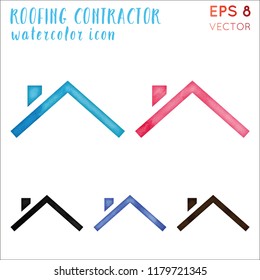An Assessment Of Inside Versus Exterior Paint: Basic Distinctions And Their Applications
An Assessment Of Inside Versus Exterior Paint: Basic Distinctions And Their Applications
Blog Article
Created By-Ellis Henry
When you're picking between exterior and interior paint, it's vital to understand their basic distinctions that impact both performance and aesthetics. Inside paints are crafted for lower VOC degrees and smoother coatings, making them perfect for interior rooms, while outside paints are made to sustain extreme weather conditions and UV direct exposure. Each type offers an unique function, but understanding when to use one over the various other can substantially affect your job's end result. So, what factors should you think about when making your selection?
Structure and Solution
When selecting in between interior and exterior paint, comprehending their structure and formula is crucial. Interior paints typically consist of a reduced quantity of unpredictable natural substances (VOCs), making them more secure for indoor air quality. You'll observe they usually have a smoother coating, which enhances their ability to stand up to spots and permits simpler cleaning. They're made to endure the roughness of indoor environments, consisting of varying humidity levels and temperature level fluctuations.
On the other hand, exterior paints are formulated to withstand harsher problems. They typically have greater degrees of pigments and additives to stand up to fading from UV rays, along with to prevent mold and mold development. Their composition consists of extra binders and materials, which provide much better bond to surfaces revealed to the components. This ensures the paint can hold up against rain, snow, and fluctuating temperatures without peeling off or fracturing.
Efficiency and Sturdiness
Evaluating performance and sturdiness is important when picking between interior and exterior paint. Interior paint is created for surface areas that experience less damage. It typically stands up to fading and scuffing, making it excellent for living spaces and rooms. However, it might not hold up well in high-moisture areas like bathroom and kitchens without proper formulation.
On the other hand, outside paint faces harsher problems. please click the next internet page to stand up to UV rays, rain, and temperature changes. This type of paint commonly includes ingredients that prevent mold and mildew growth, making certain long life in numerous environments. When you use external paint, you can expect it to last several years much longer than interior paint, supplied it's applied appropriately.
An additional crucial difference hinges on the finish options. Interior paints frequently have a variety of surfaces for aesthetic appeal, while exterior paints focus on toughness over sheen. If you're trying to find something that can deal with the components, exterior paint is your best choice.
On the other hand, if you're focused on indoor visual appeals with less worry for severe conditions, indoor paint may be ideal. Inevitably, your option needs to line up with the specific needs of the setting.
Visual Factors to consider
A fresh coat of paint can transform a room, however visual considerations play a crucial role in your choice between interior and exterior choices. When https://emiliotdltb.bloggadores.com/30800279/a-beginner-s-handbook-for-determining-the-most-effective-paint-finish-for-your-project picking paint, consider the state of mind you want to create. Inside paint enables you to explore a broader range of colors and coatings, enabling you to reveal your individual design and improve your home's ambiance. Whether you go with soft pastels or vibrant hues, the best indoor paint can make your areas feel comfortable, vibrant, or tranquil.
On the other hand, exterior paint needs to align with your home's architecture and the surrounding environment. Below, you're not simply making a style statement; you're additionally thinking about aesthetic allure. Choosing shades that balance with your area can increase your home's value and aesthetic charm. Bear in mind that exterior paint is likewise subject to fading and weather changes, so choosing a classic shade can save you from regular repainting.
Ultimately, consider how each choice fits your vision. By aligning your paint option with your desired aesthetic, you can develop rooms that show your individuality while preserving performance.
Final thought
When it comes to choosing paint, recognizing the crucial distinctions between exterior and interior options is crucial. Inside paints focus on aesthetic appeals and reduced VOCs, making them excellent for boosting your interior rooms. In contrast, exterior paints are designed for longevity and weather resistance, shielding your home from the components. By considering your specific requirements and the setting, you can confidently pick the right paint to accomplish the appearance and durability you prefer for your space.
